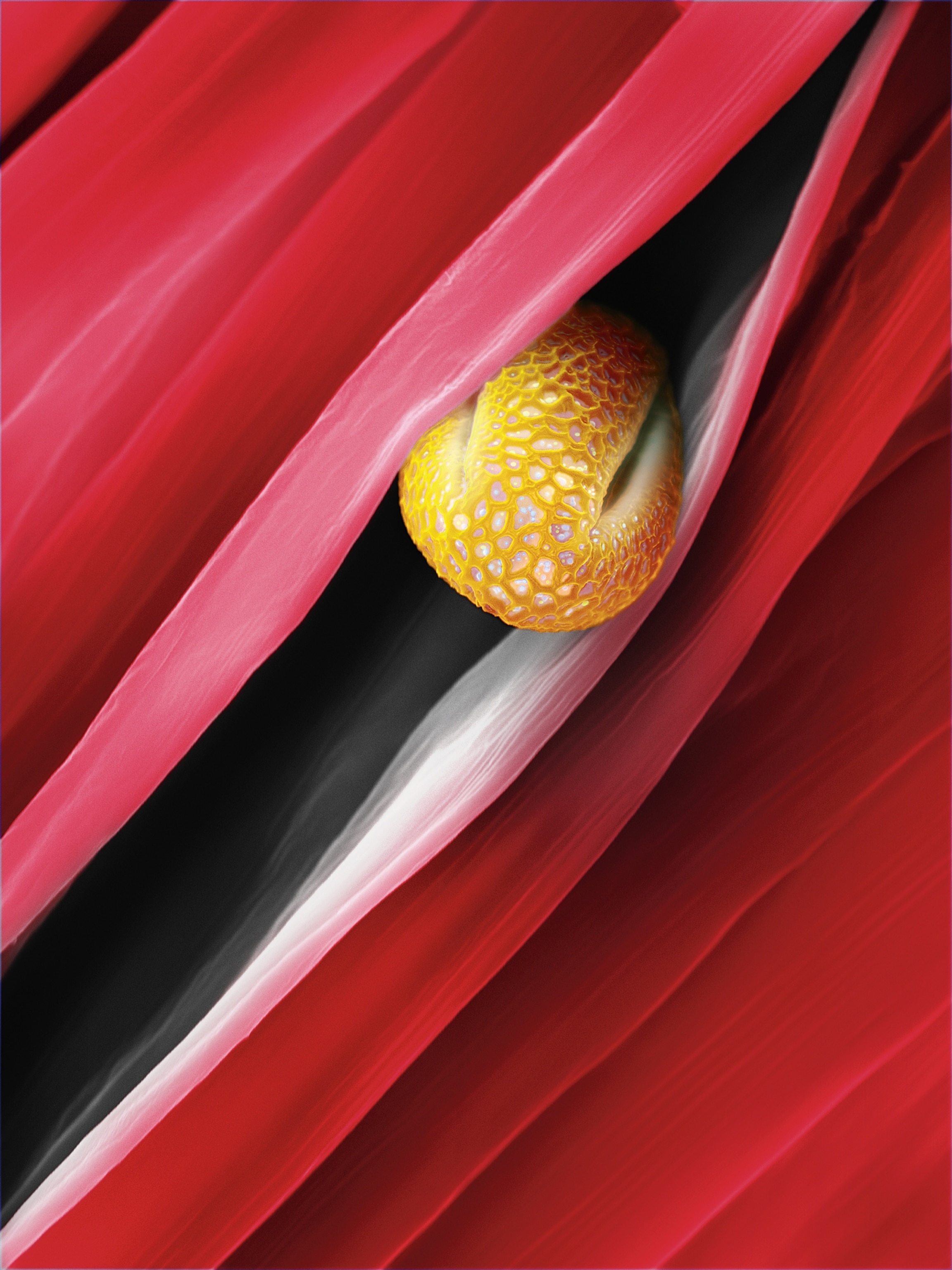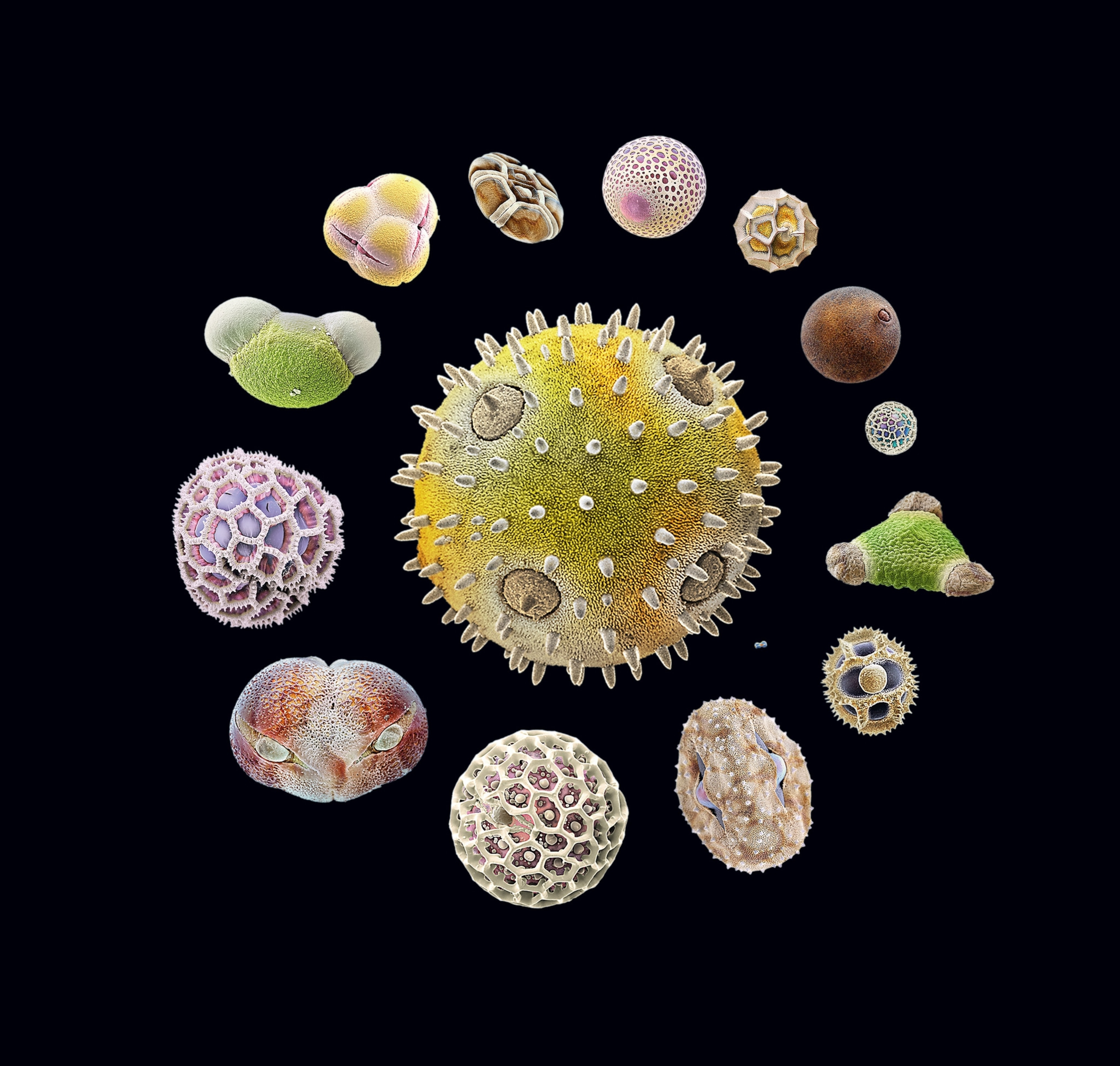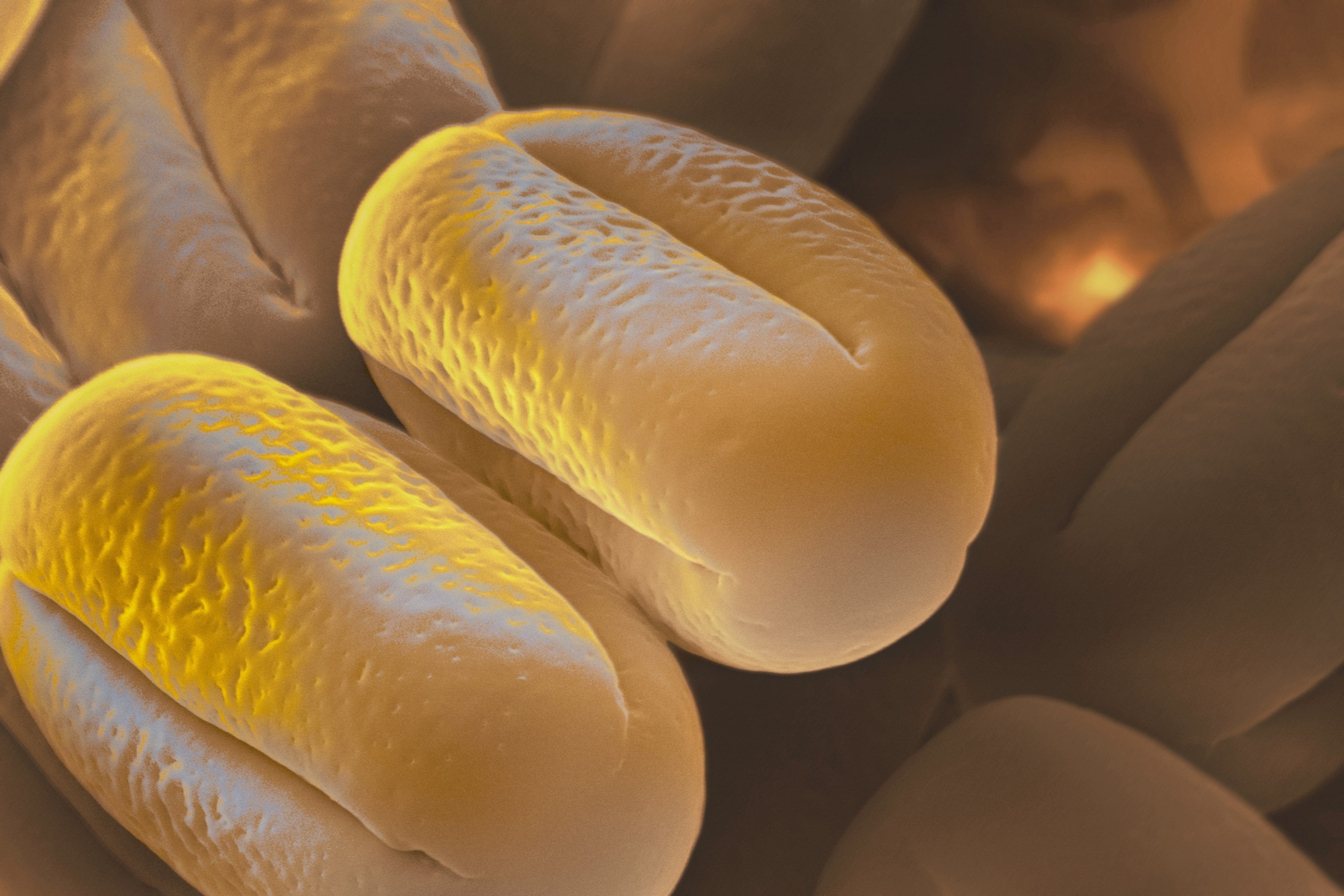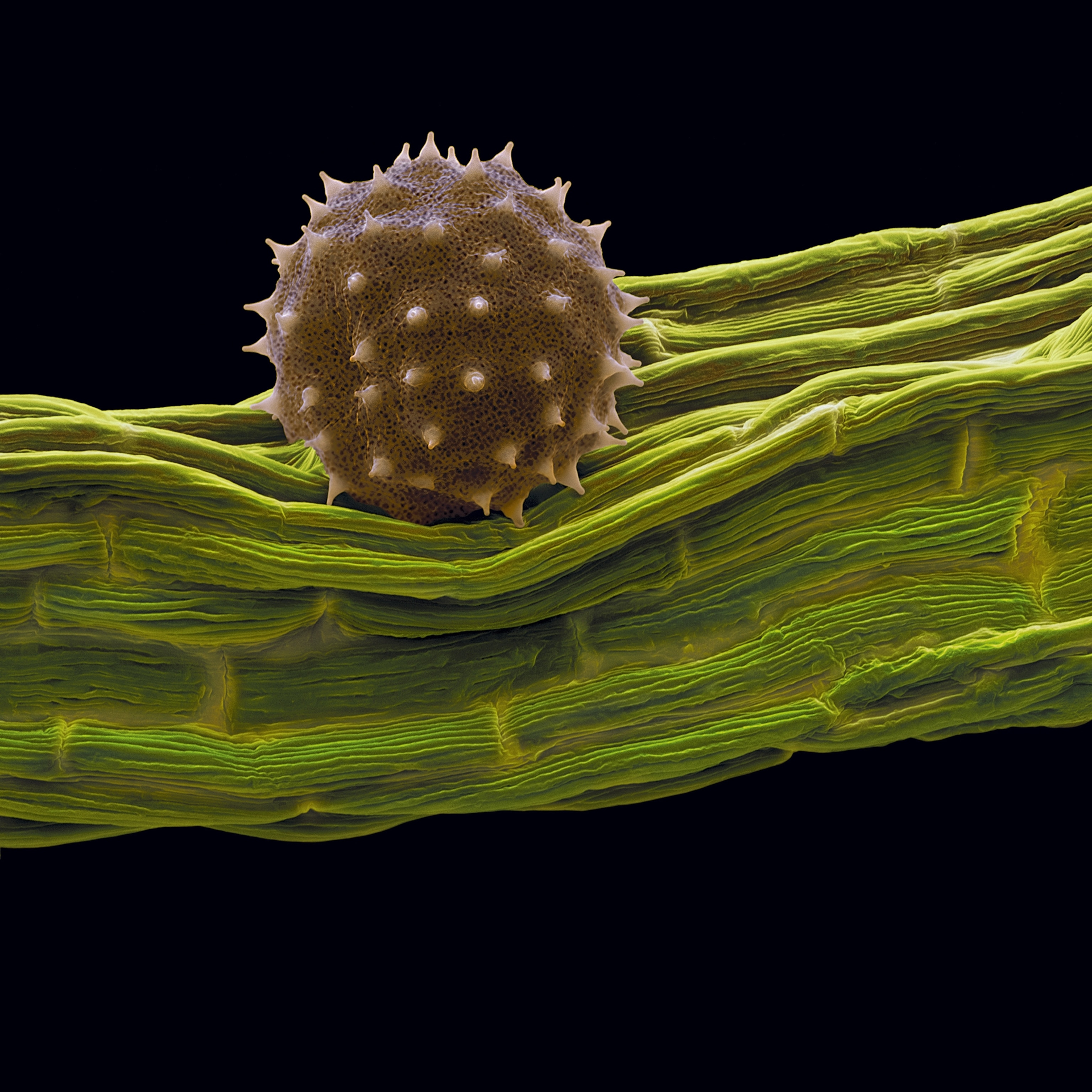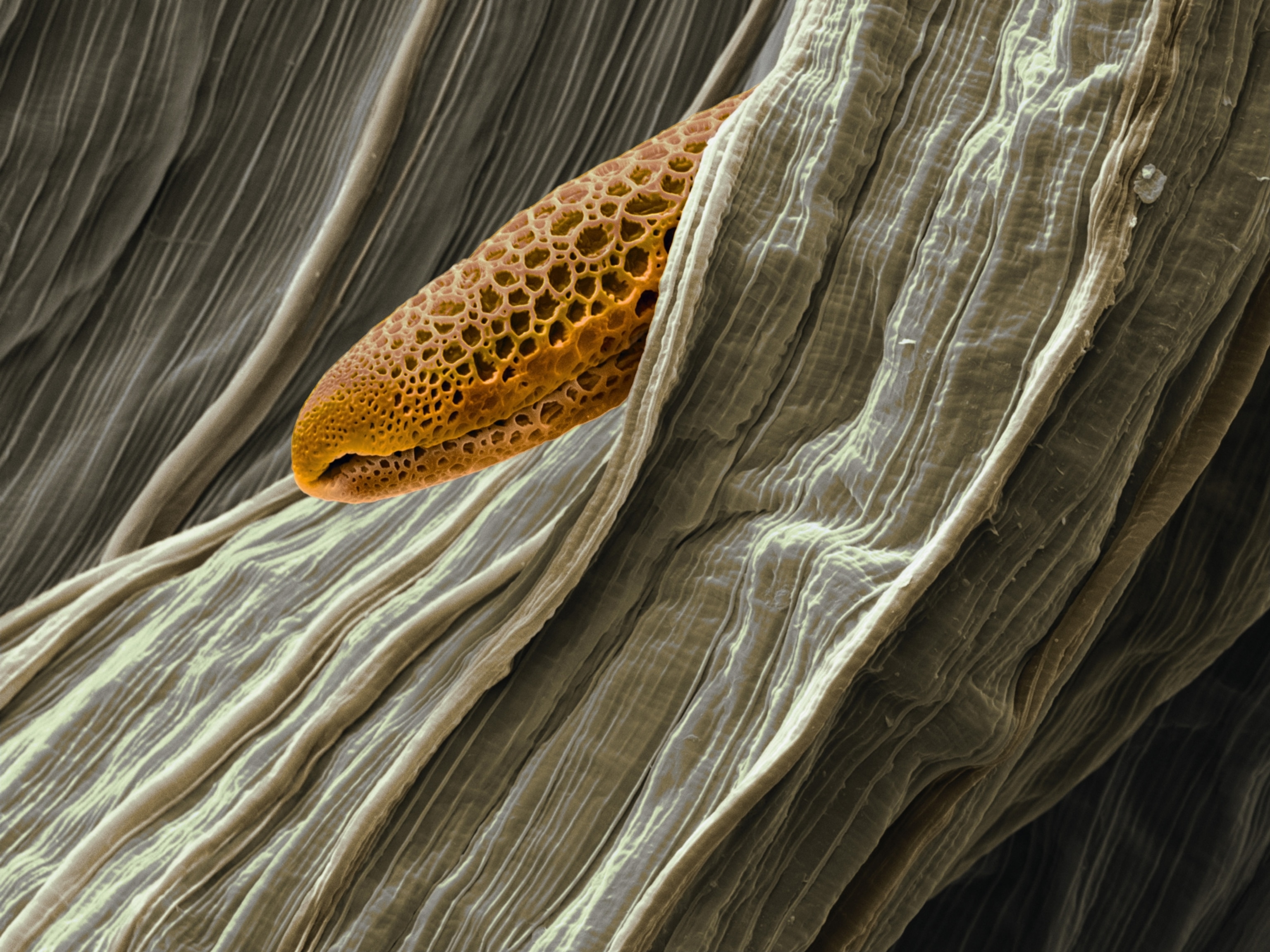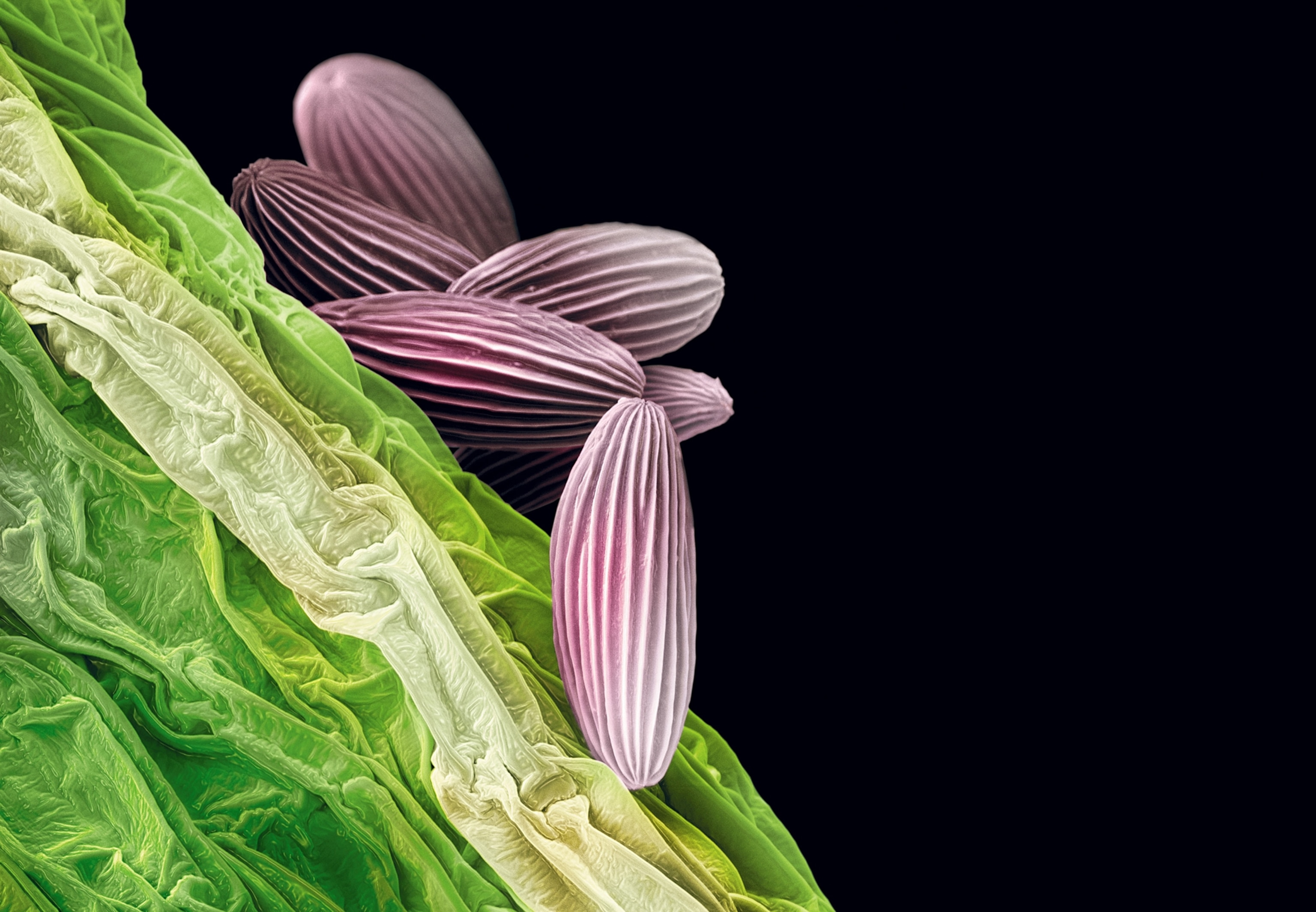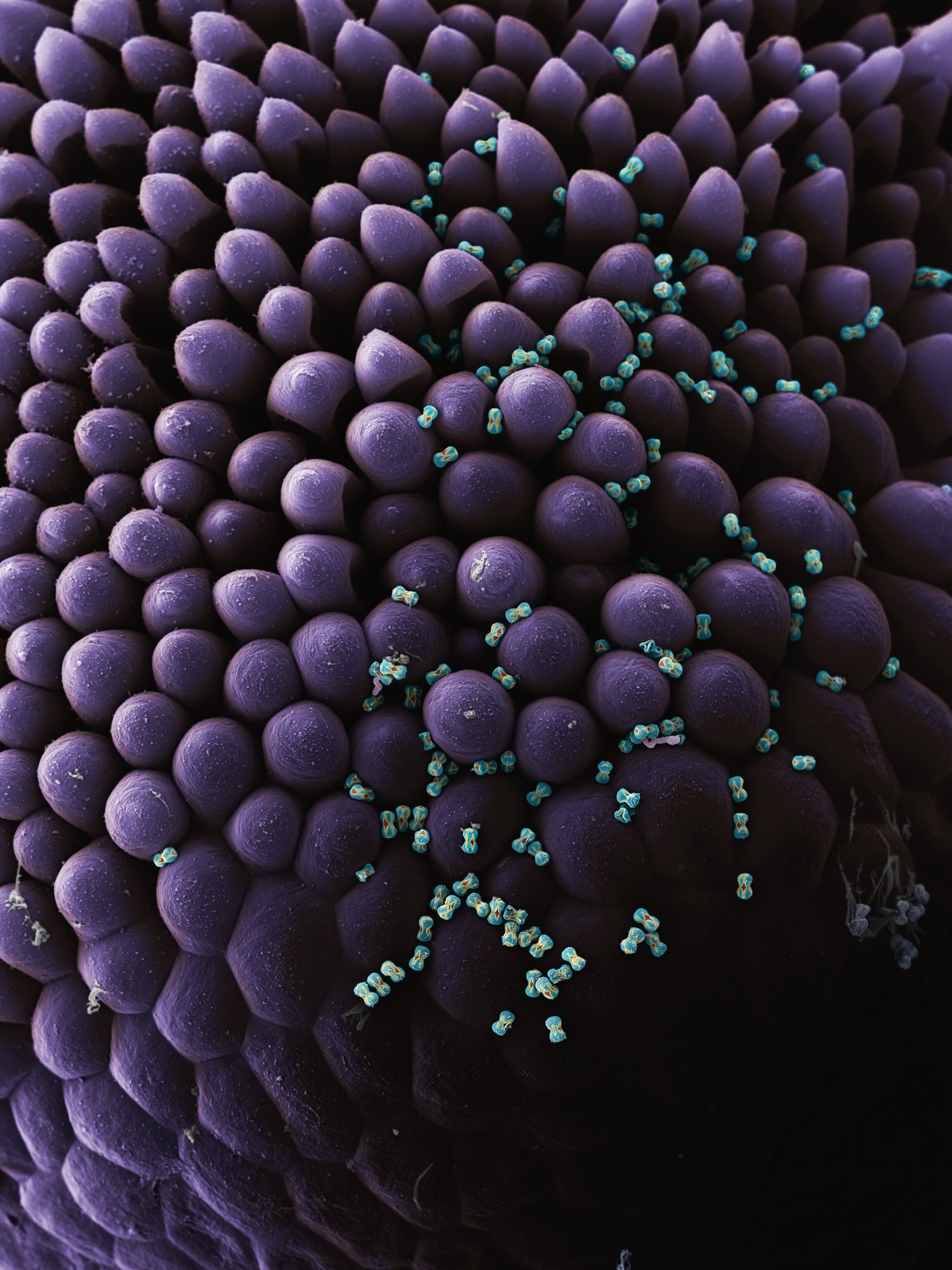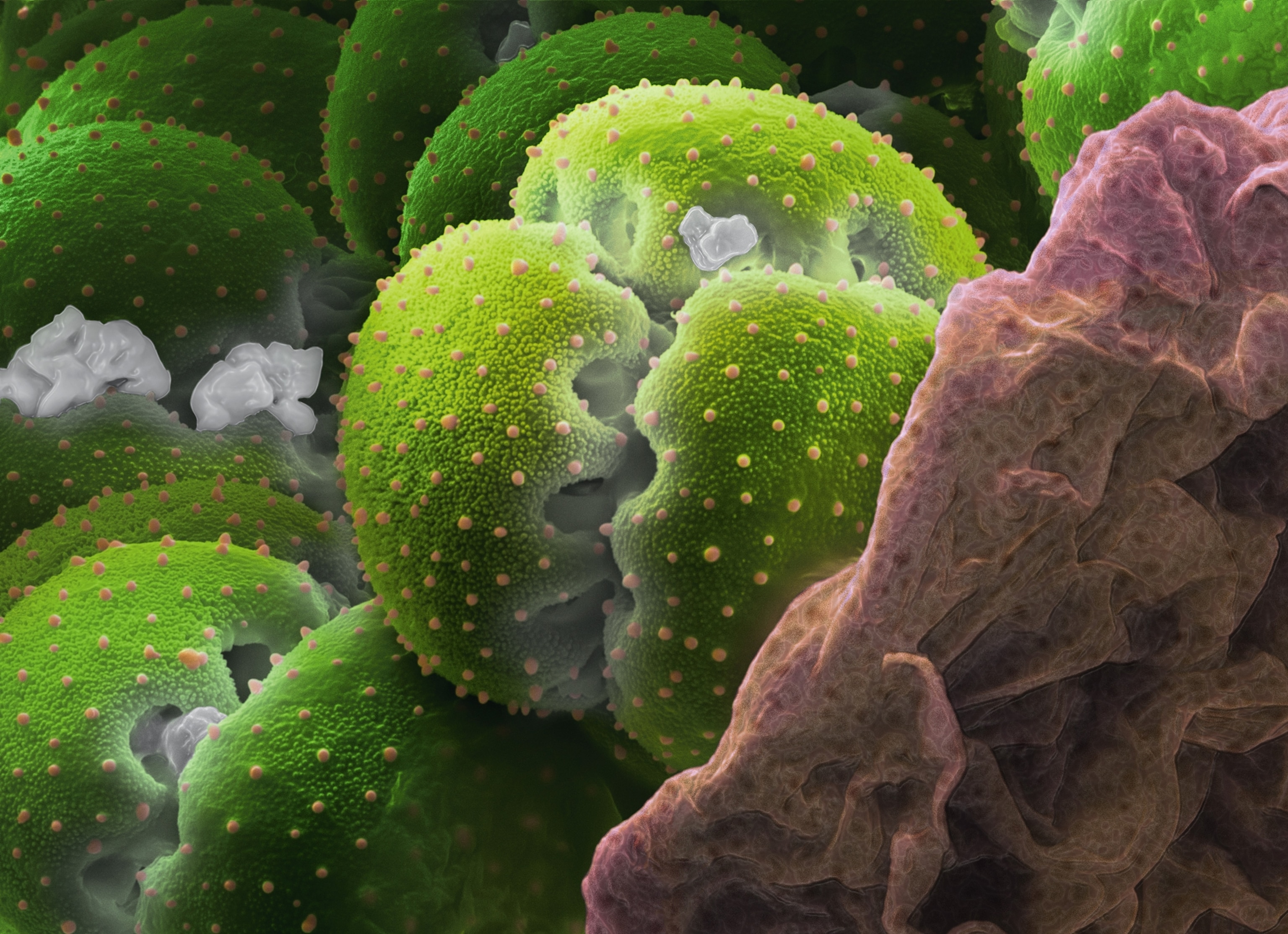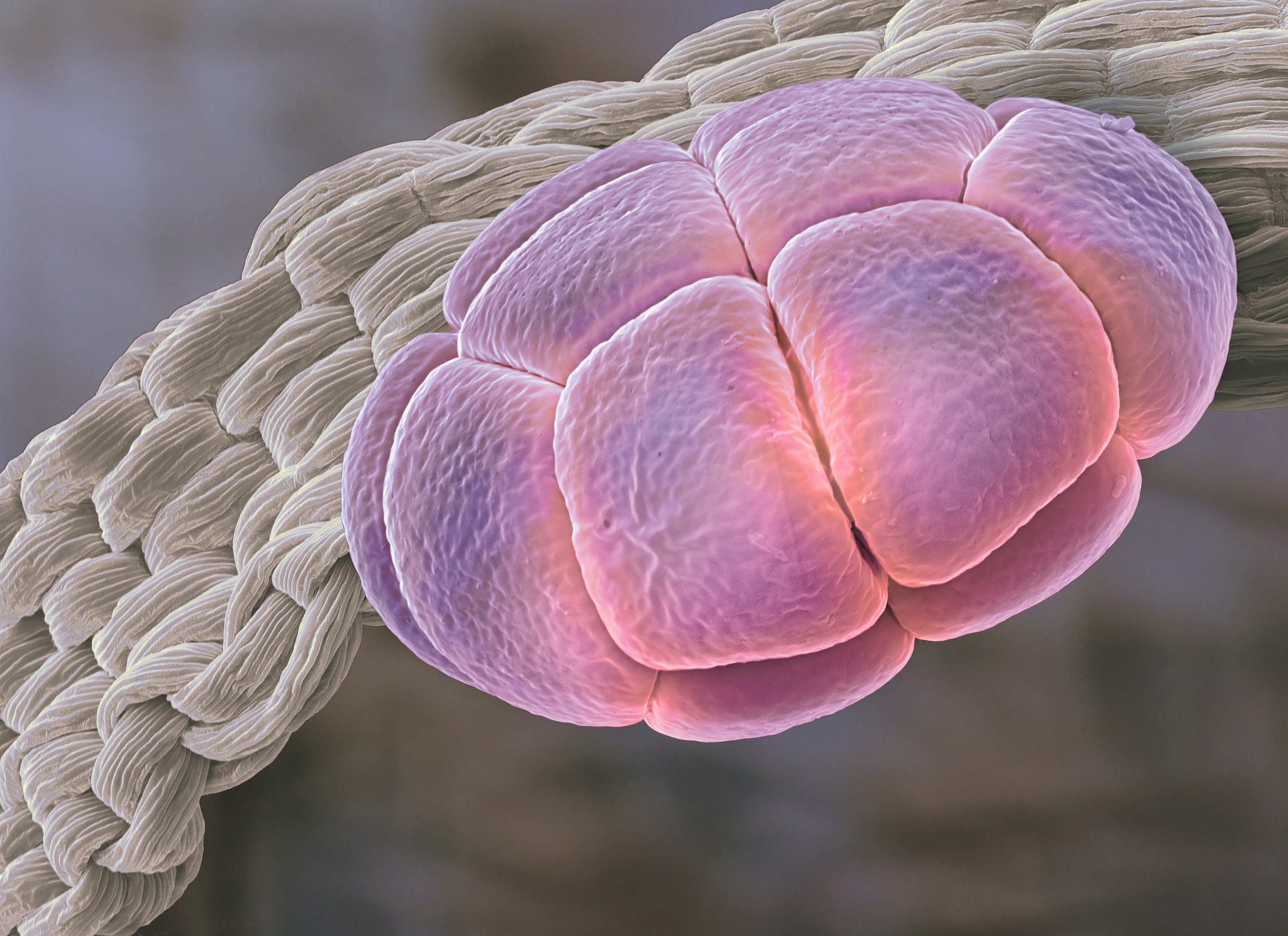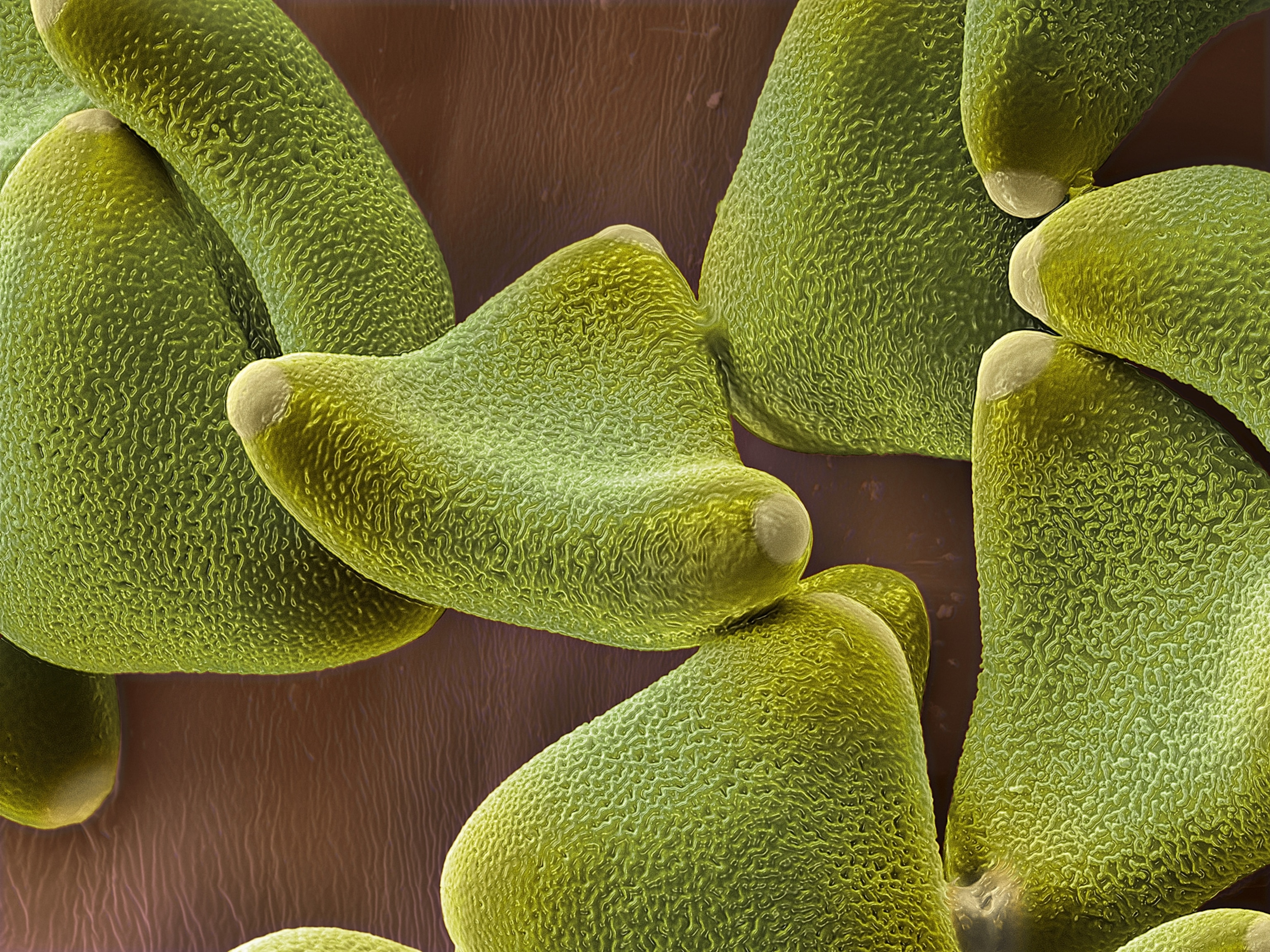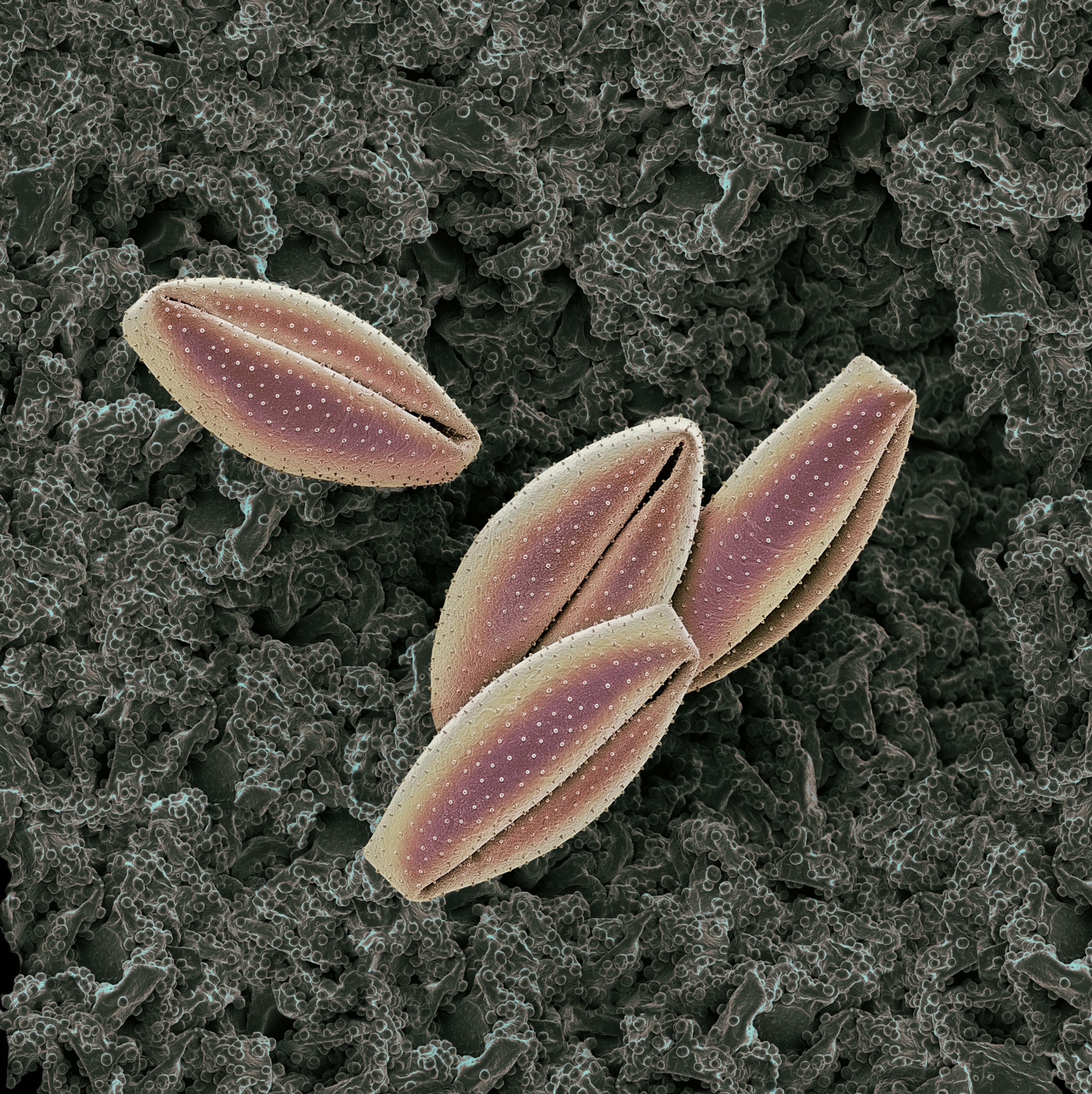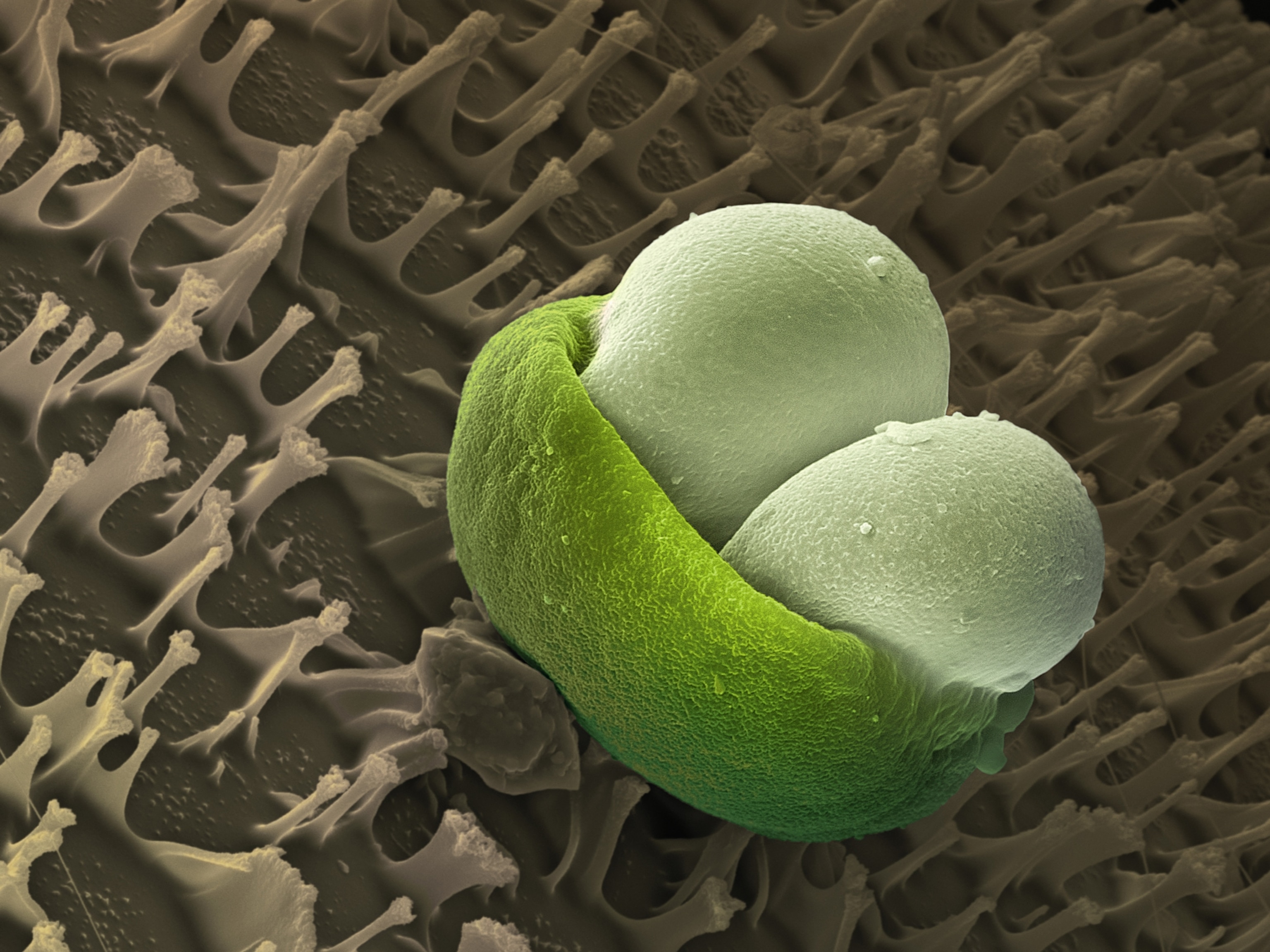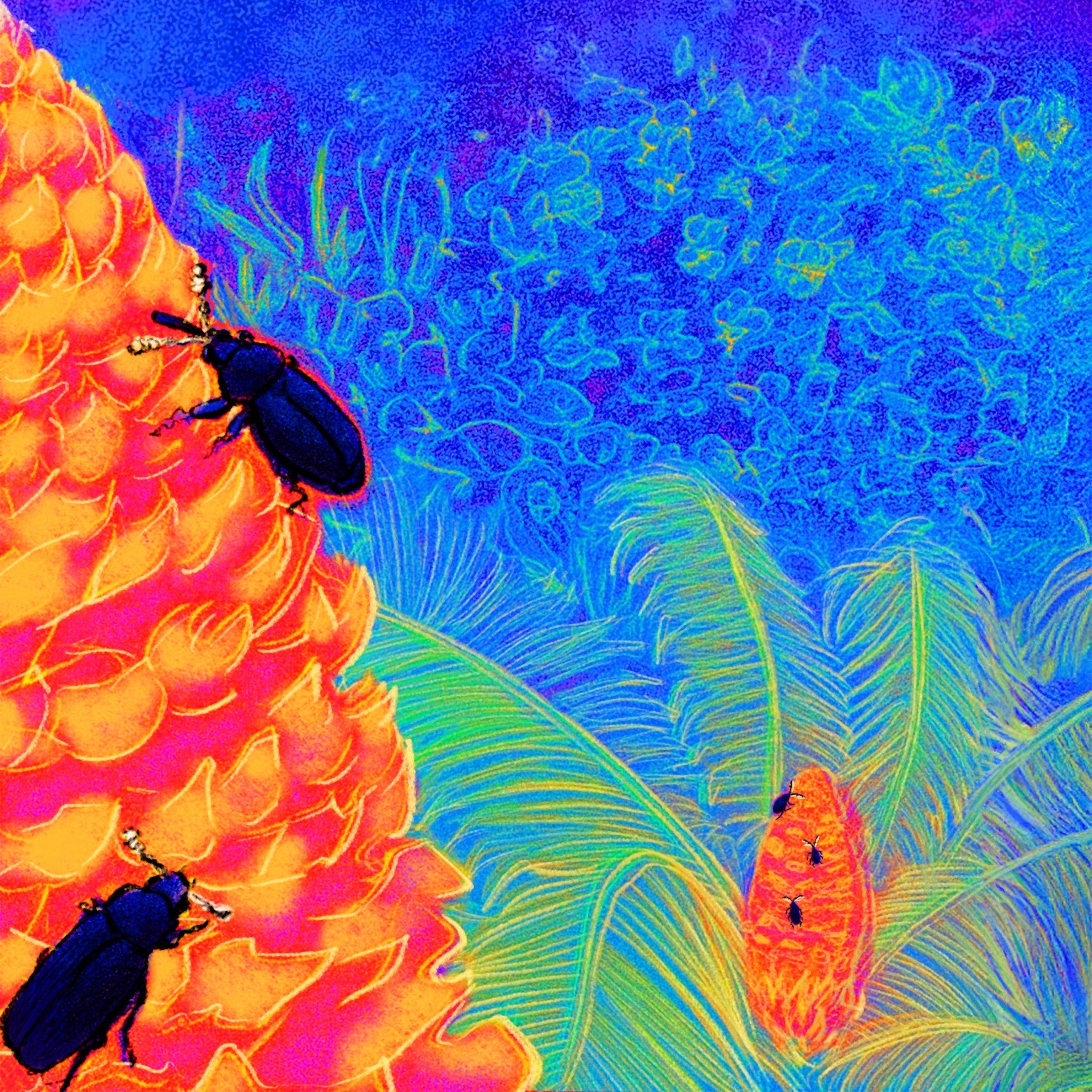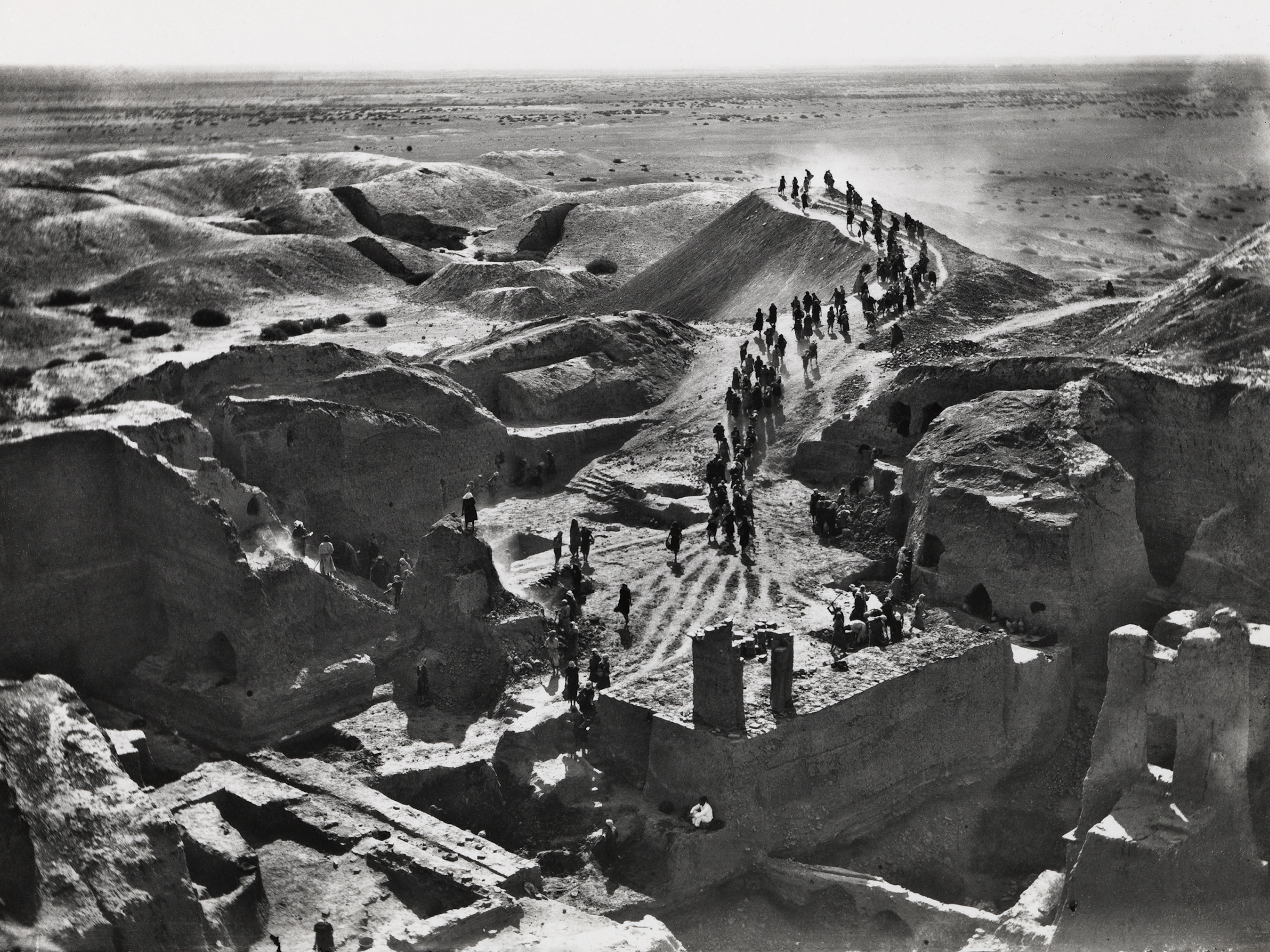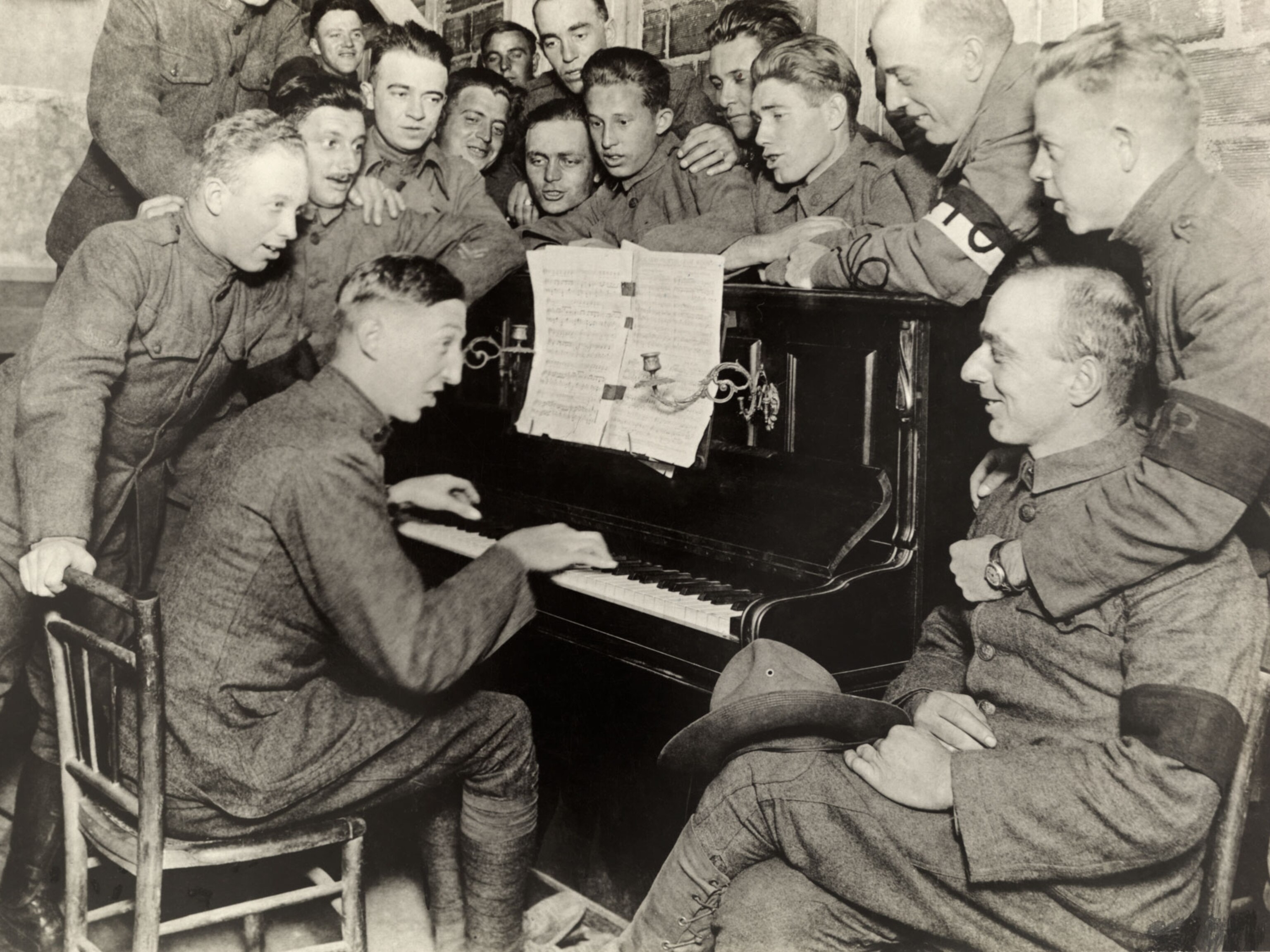Love Is in the Air
Birds do it, bees do it, even pollinating plants do it.
As humans we take many things for granted. One is surely the ability to walk, crawl, or even, after a little too much to drink, drag ourselves over to a lovely member of the opposite sex. Plants have no such luxury. For much of the long history of green life on land, plants had to be near each other, touching almost, to mate. Moss lets its pale sperm into rainwater to float to nearby partners, as did other early plants, but this method requires moisture. Vegetation could only survive in those damp corners where beads of water connected, dependably, a male to a female. Most of the Earth was brown.
Then one day more than 375 million years ago, it happened. One lineage of plants evolved pollen grains and seeds, and from then on nothing was the same. Let's not mince words. Pollen is plant sperm—two individuals per grain—surrounded by a single, often golden, wall that offers both protection and chariot. If the tension in the long story of plants was the distance between lovers, pollen was what would bring them together, over feet or even across continents. It was an evolutionary trick that transformed the world by letting strangers have sex.
Life remained a long shot. Pollen lunged into gusts of wind on the chance that a few grains would find their mark. With time came more contrivances. Pollen sacks burst, propelling the grains. Pollen evolved balloon-like wings to catch the breeze. Plants began to produce thousands, millions, billions of individual grains. They made many that one might succeed.
The target that each of those billions of pollen grains aims for is the naked ovule (the future seed) of another plant of the same species. At the ovule, which contains an egg cell, the pollen grain attempts to initiate a tube to connect sperm and egg. If the pollen lands on the wrong species of plant or is too weak or old, the tube does not form. But every so often it does, and then one of the two sperm, the chosen one, travels to fertilization, and a viable seed develops. That there are plants at all is testament to the more than occasional success of this intimate, improbable lottery.
Life proceeded like this, with pollen carried by wind and chance to ovules, for millions of years, until things changed again—"a soundless, violent explosion," the naturalist Loren Eiseley called it. In one lineage, individuals evolved seeds protected in fruits and surrounded by petals. That lineage, the angiosperms, did better because their ovules were protected (in ovaries, which turn into fruit), and because the petals attracted animals that, however accidentally, carried pollen on feathers, skin, or hair. Animals carried pollen from flower to flower more consistently than did wind, so plants with attractive petals were favored. Flowers evolved many colors to woo and nectar, an additional lure. Animals came in the thousands. Hummingbirds and honeycreepers evolved long beaks to reach nectar. Moths, bees, and flies evolved long, sucking mouthparts. Bats evolved long, sticky tongues—some of them nearly twice as long as their bodies.
The nectar-gathering animals disperse pollen at the same time. Foraging bumblebees collect pollen on tiny hairs while they bump around in flowers drinking, and deposit that pollen at the same time as they buzz among flowers. Then they go one further by scraping some collected pollen into tiny baskets, corbiculae, on their rear legs. Once home, the bees store the pollen in pots they make out of wax, keeping it to eat on rainy days.
In allowing plants to have sex at a distance, pollen, and ultimately flowers, led to explosive diversification, turning a brown planet green and then red, yellow, white, orange, and all the rest. Pollen diversified too. In the 300,000 pollen-bearing plant species on Earth, there are 300,000 different forms of pollen. The great variety in colors, shapes, and textures of the grains has evolved in accordance with each plant's biological particulars. Beetle-pollinated plants tend to have smooth, sticky pollen, the better to adhere to the lumbering beetles' backs. Plants pollinated by fast-moving bees or flies may have spiny pollen that lodges easily between the insects' hairs. Plants pollinated by bigger animals, such as bats, sometimes have bigger pollen, though not always—perhaps not even most of the time. In the details of pollen's variety, more remains to be explained than is understood.
The most recent story in the history of pollen is recorded not by the successes but by the failures. The air, however clear, is full of unsuccessful pollen, drifting in eddies of wind. Billions of grains reach the stratosphere. Even now, as you read, a few grains may rest on your hands or face, or on your cat. Pollen settles and accumulates in sediment, layer after layer, particularly at the bottoms of lakes and ponds.
In those layers, where decay is slow, pollen constitutes a history book far outlasting the plants that produce it. Grass pollen in sediment means grasslands, pine pollen indicates pine forests, and so on—an encyclopedia of detail spelled out in the mud. Palynologists take core samples of lake-bottom layers to examine shifts in the species of plants from one layer to the next. Collectively such chronicles of changing plant life can span thousands of years or more.
Scientists studying the pollen in core samples see changes in the frequency of fires, the retreat and expansion of species with glaciations, and more. But the biggest change in millennia has come recently, a measure of the march of human technologies. With the spread of agriculture, tree pollen has, spring after spring, grown less common and the pollen of cereals and weeds more so. As we change Earth's climate, species long adapted to the cold will become rarer, and the pollen of new arrivals from warmer regions will increase. As we fly around the world, the pollen of Asian species is turning up in North America, of African species in Hawaii, of Australian species in South Africa.
Pollen has tracked the progress of civilizations before. In the Maya lowlands of Guatemala, the pollen of forest trees was once the most common. Around 4,600 years ago, corn pollen started to appear. By 2,000 years ago, most pollen came from plants associated with agriculture.
Then around a thousand years ago, corn pollen began to disappear. Weed pollen too. Eventually, the pollen of trees came back. In seeing this change, palynologists can infer much of the rest. The birds also came back, as did the bees and even the bats with their long, sticky tongues. Like all records, the record of pollen has biases, but here the big message needs little interpretation. The civilization rose and then faded—the temples giving way to the scramble of roots and the rise of trees with their pendulant flowers and abundant pollen, which was cast once more into the air and onto animals' wiggling backs. Whatever happens to us in the years to come, the pollen will continue to record. It offers no criticism, just testament.
All life, including our own, is improbable, but somehow the lives of plants, dependent on pollen's traffic, are particularly so. And yet they find each other again and again, as they have since before the days of the dinosaurs, when giant dragonflies cruised the air, yellow dust no doubt stuck in their prehistoric hair.


